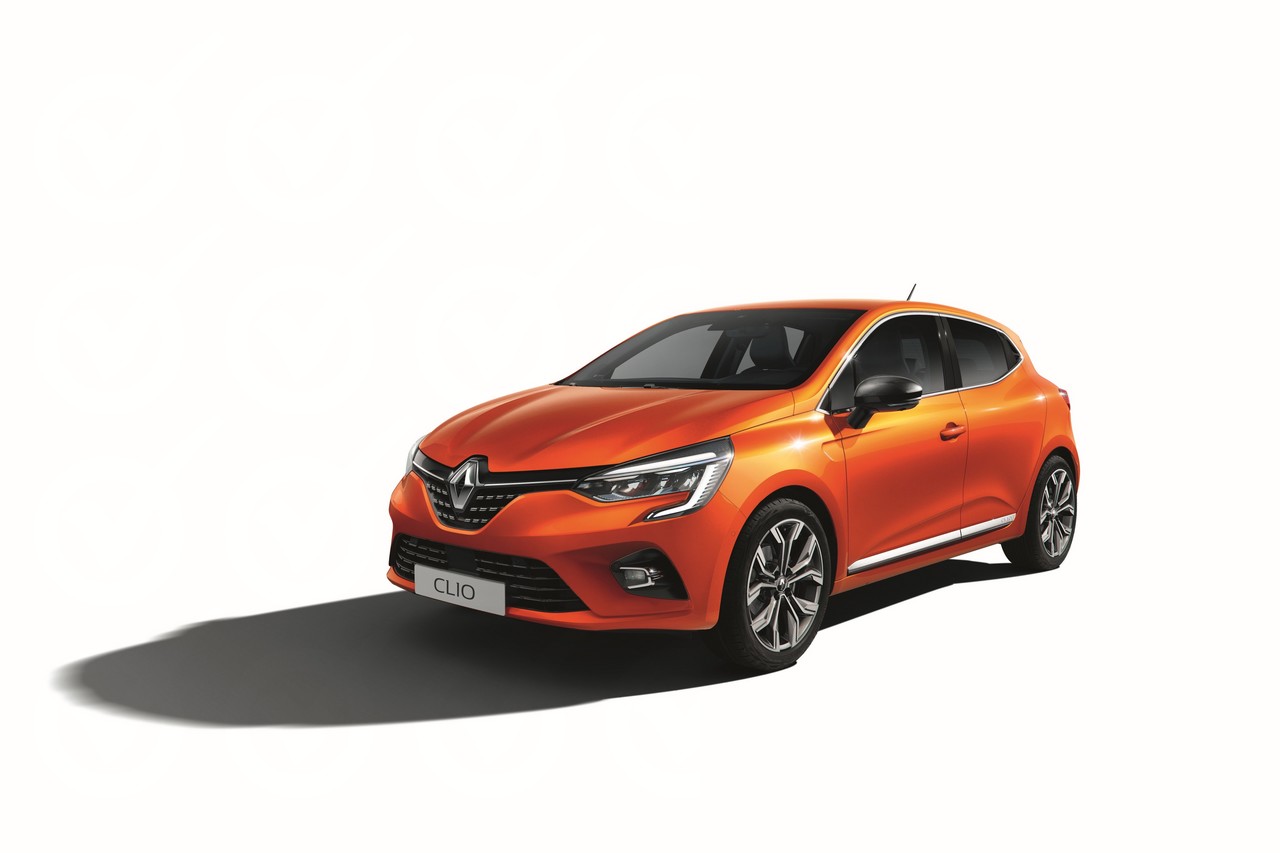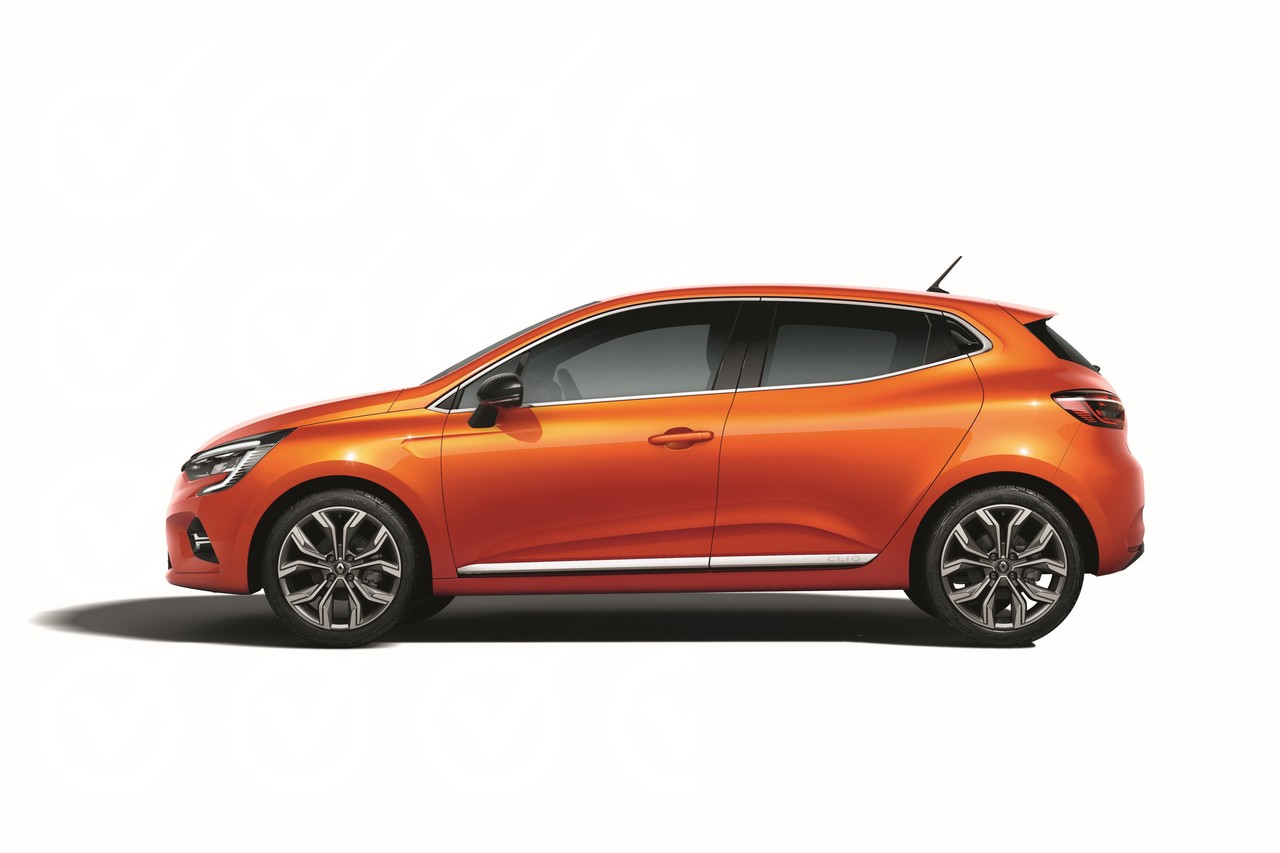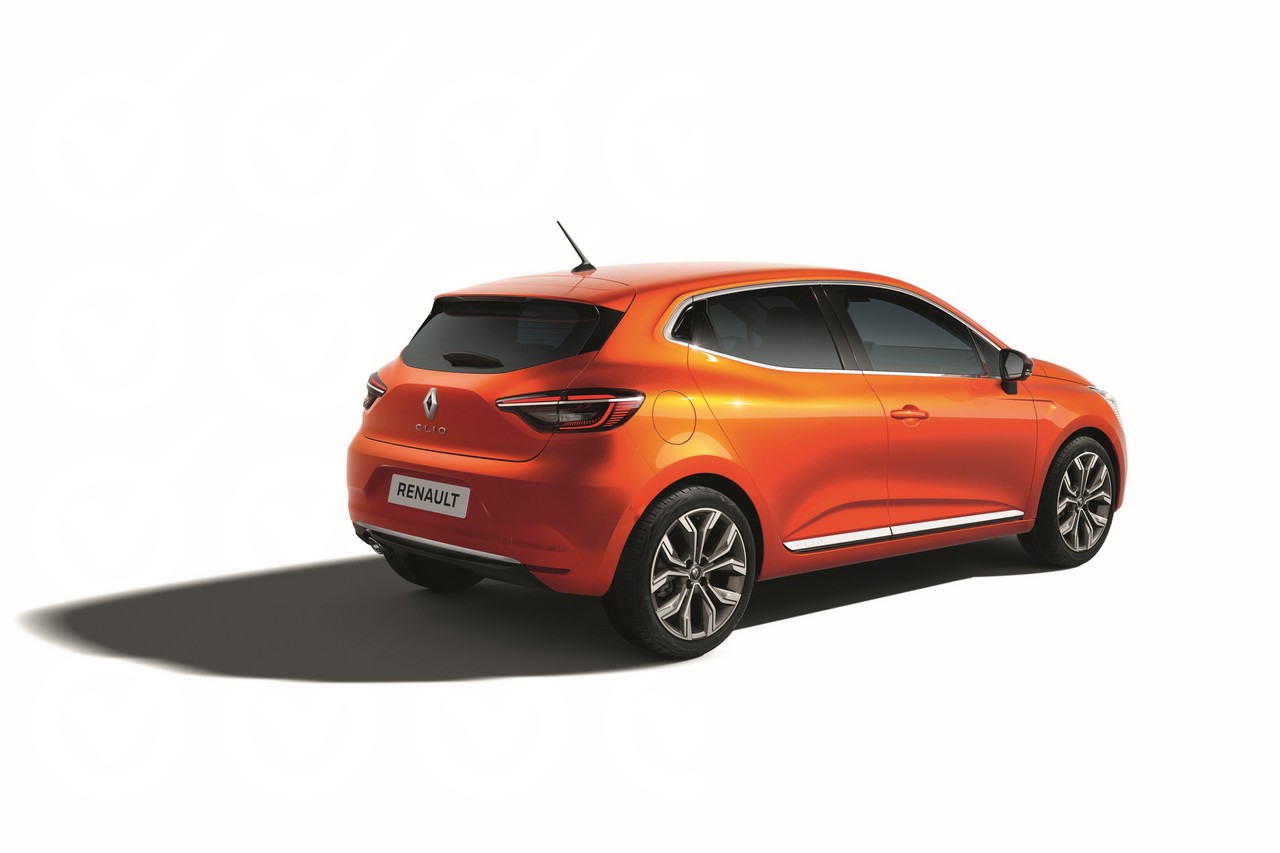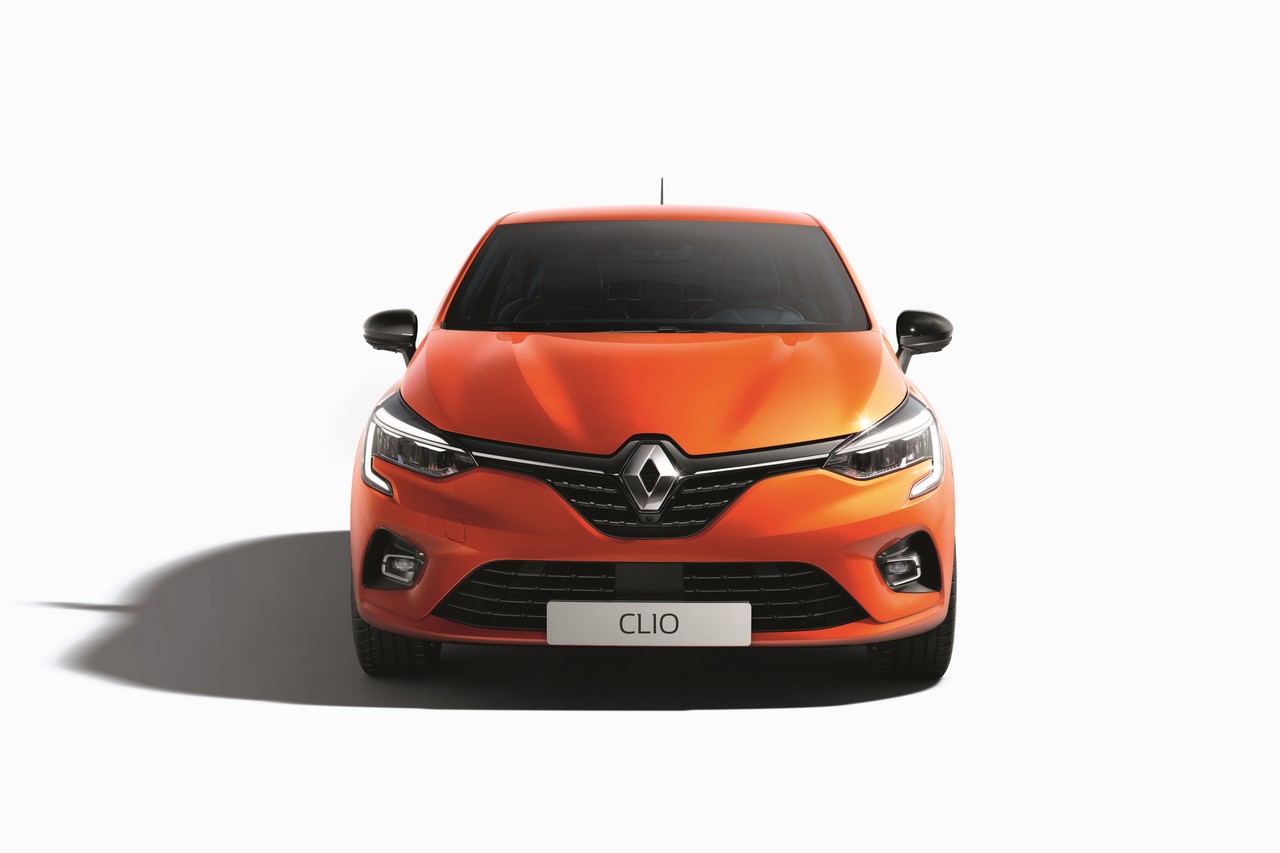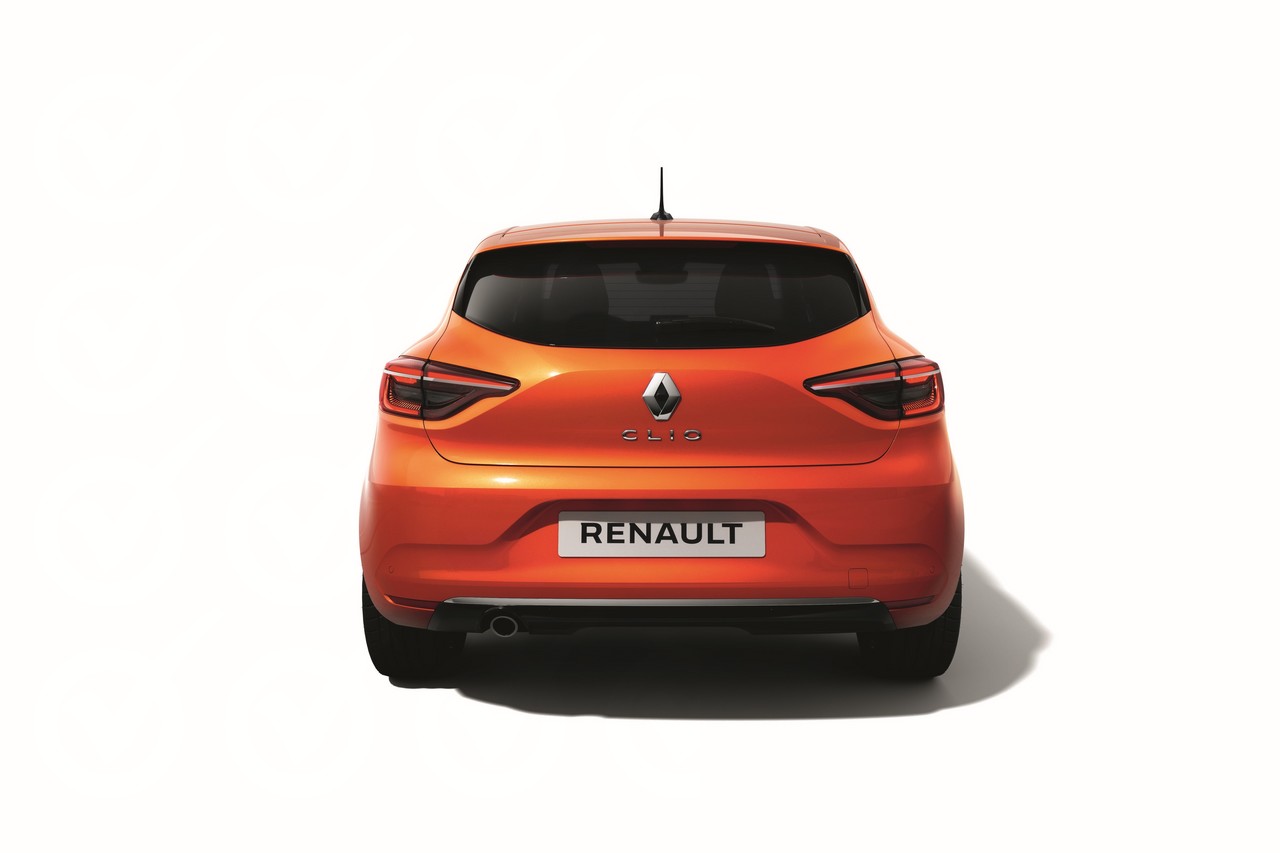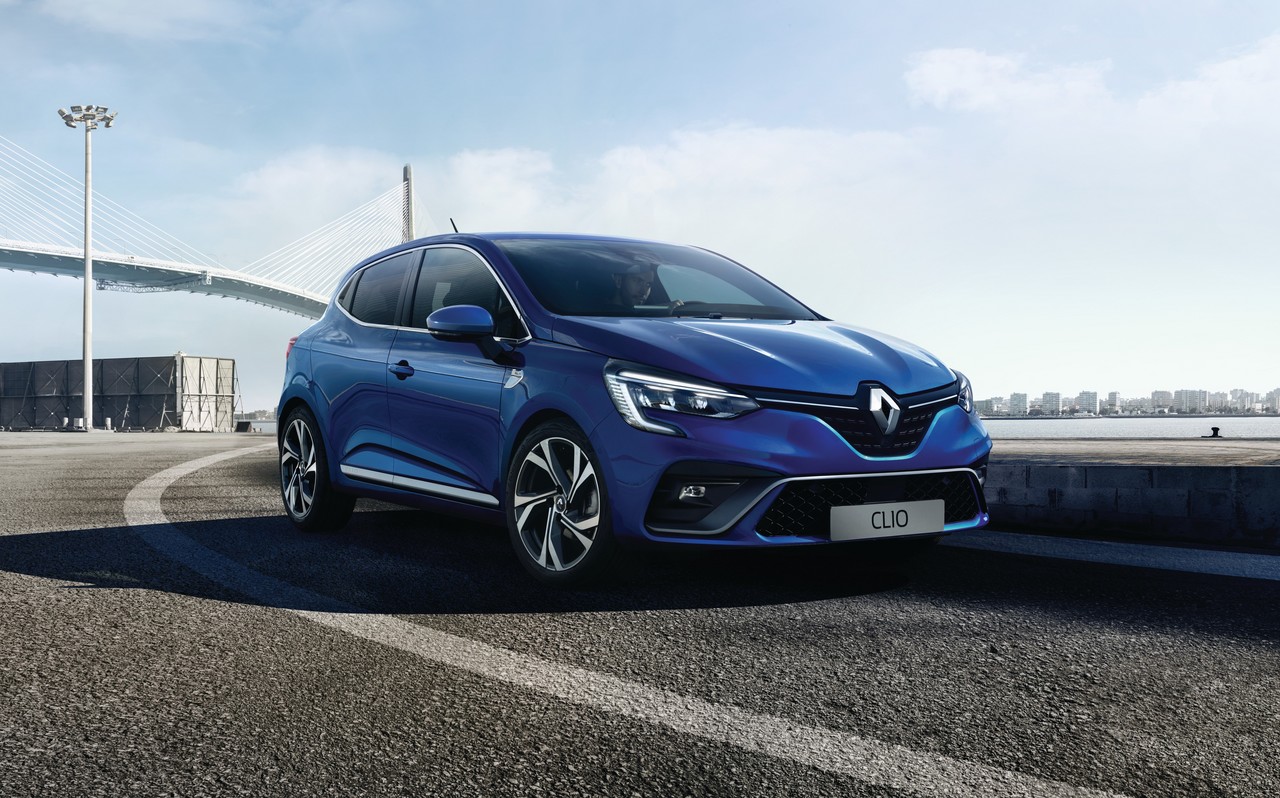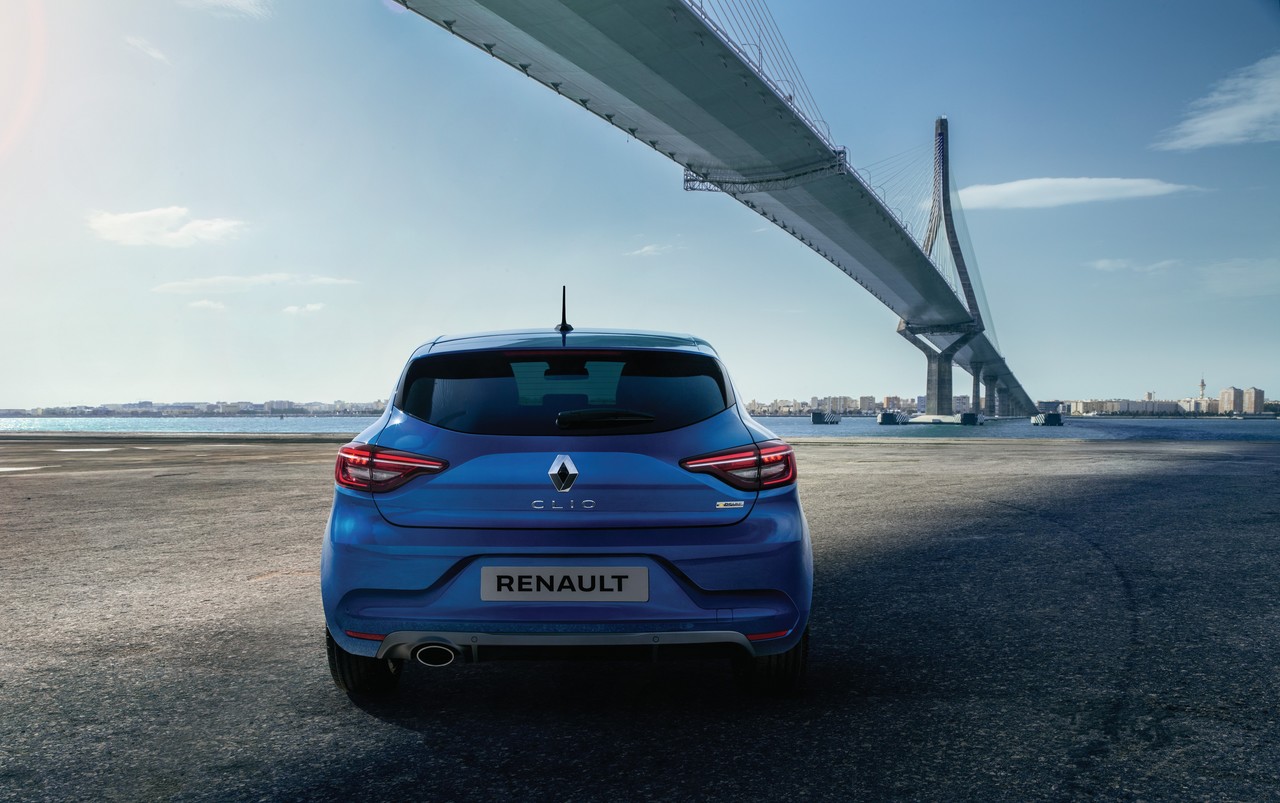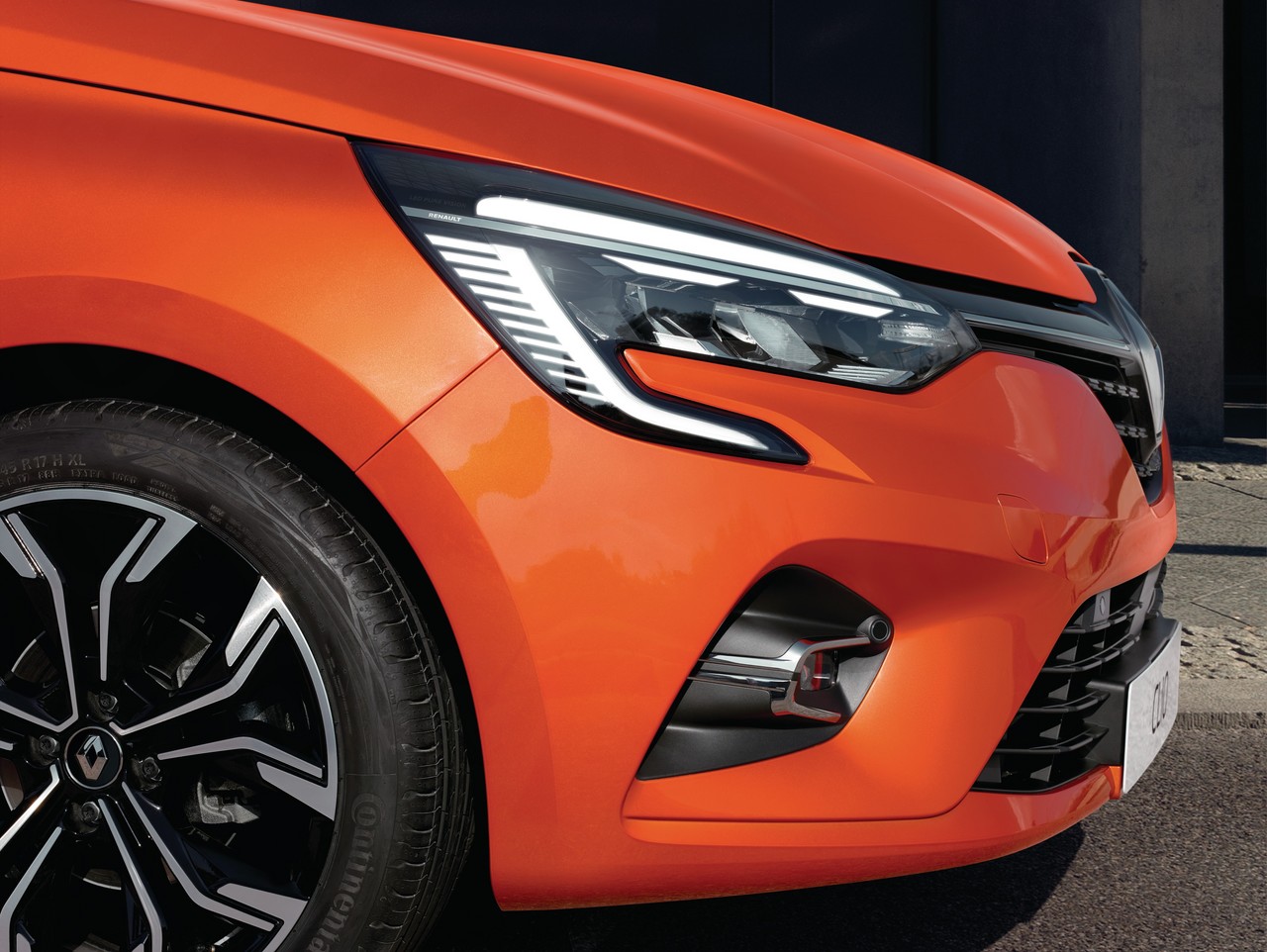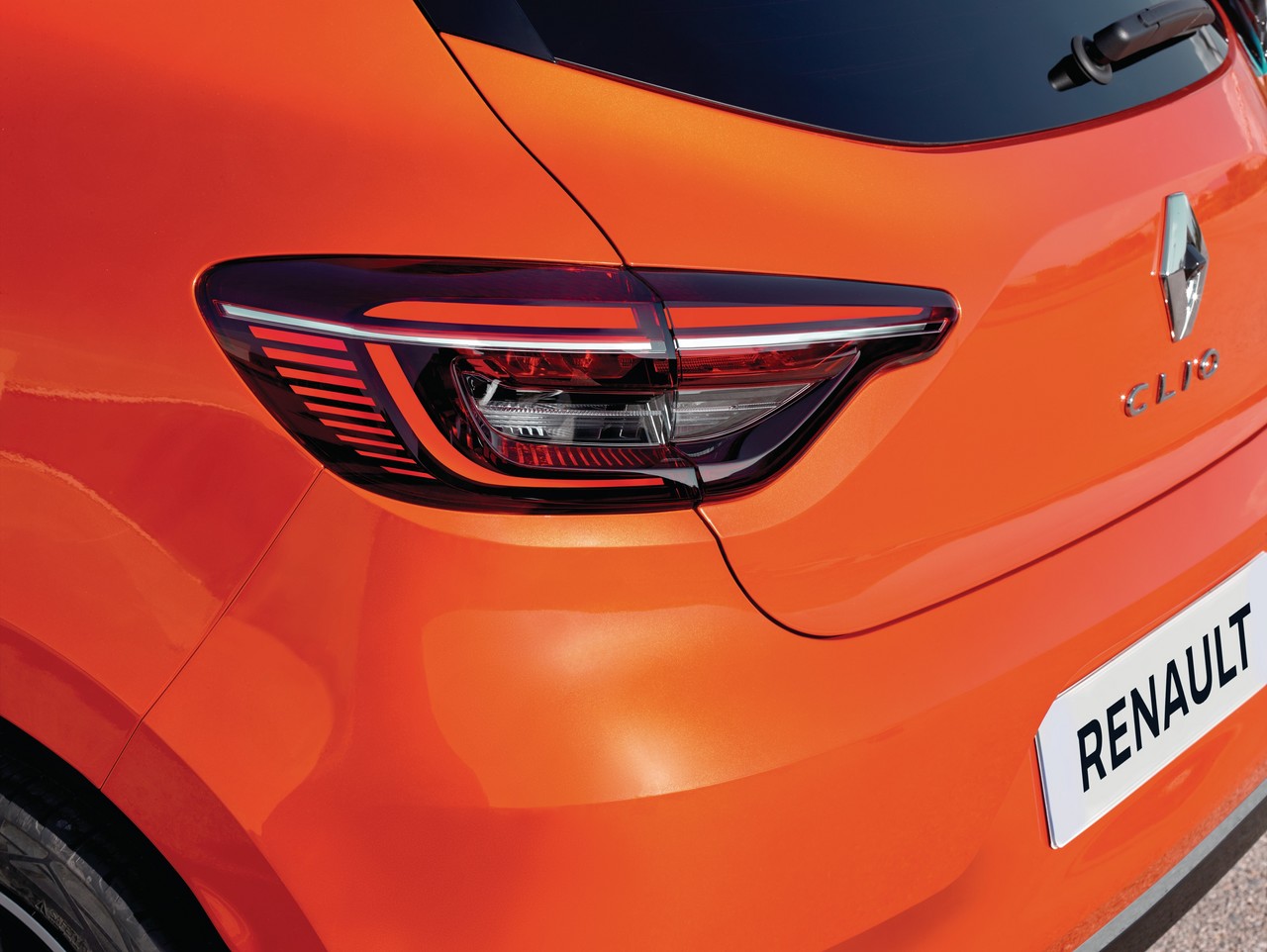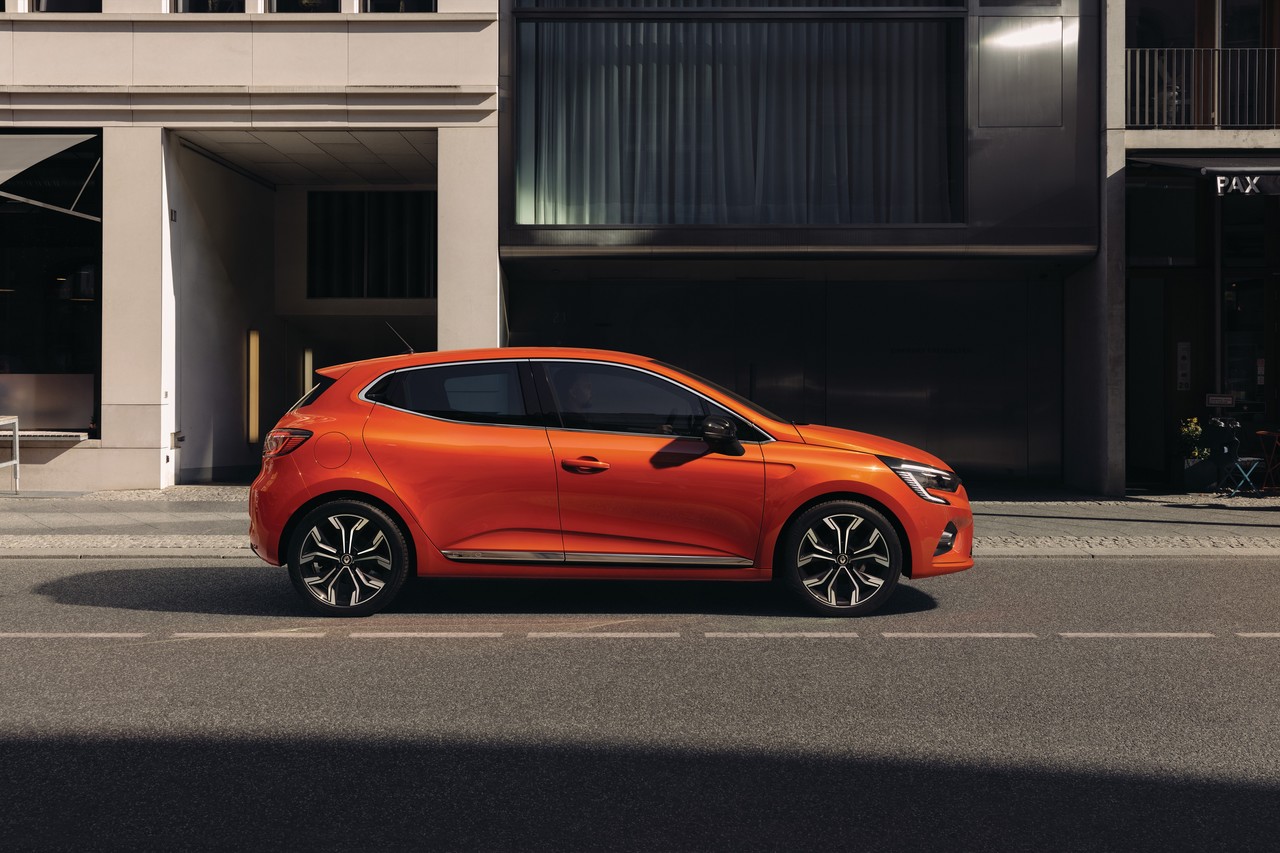
- Autonomous Emergency Braking fitted as standard
- Expected ride/handling balance
- Spacious interior
- Steering feel?
- Ratios for seven-speed double clutch transmission?
Overview
The Renault BJA Clio is a light, five-door hatchback that will be released in Europe in September 2019. For Australia, AustralianCar.Reviews expects the Renault BJA Clio to be available from late 2019 and powered by 1.0 and 1.3-litre turbocharged petrol engines that are mated to five-speed manual and seven-speed double clutch transmissions, respectively. In international markets, the Renault BJA Clio will be offered in Life, Zen, Intens and R.S. Line editions (the latter replacing GT-Line).
The Renault BJA Clio will be manufactured in Flins (France), Bursa (Turkey) and Novo Mesto (Slovenia).
| Variant | Engine | Trans. | Peak power | Peak torque |
|---|---|---|---|---|
| 1.0 SCe | 999 cc petrol I3 | 5sp man. | 65 kW | 95 Nm |
| 75 kW | 95 Nm | |||
| 1.0 TCe | 999 cc turbo petrol I3 | 6sp man. | 100 kW | 160 Nm |
| 1.3 TCe | 1332 cc turbo petrol I3 | 7sp DCT | 130 kW | 240 Nm |
| 1.6 e-Tech Hybrid | 1.6-litre petrol I4 and 1.2 kWh battery | TBA | 130 kW | TBA |
| 1.5 Blue dCi | 1461 cc turbo diesel I4 | 6sp man. | 85 kW | 220 Nm |
| 115 kW | 260 Nm |
Body and dimensions
The Renault BJA Clio is underpinned by the Renault-Nissan Alliance’s CMF-B platform which commenced development in 2014 at Renault’s Technocentre in Guyancourt. According to Renault,
- 85 per cent of parts for the CMF-B platform are new compared to the ‘B’ platform which underpinned the X98 Clio;
- The body structure, side members and front body panel have been redesigned with a higher proportion of high elastic limit steel, while structural adhesives improve fit between steel plates;
- The CMF-B platform achieves a 50 kg mass reduction, with significant reductions in body, axle and bonnet mass;
- Underbody fairing reduces aerodynamic drag by 20 thousandths of Cd; and,
- Improved engine compartment soundproofing reduces interior noise.
Compared to the Renault X98 Clio , the BJA Clio is 12 mm shorter (at 4050 mm), 66 mm wider (1798 mm), 8 mm lower (1440 mm) and a 6 mm shorter wheelbase (2583 mm). The BJA Clio has a luggage capacity of 391 litres, which Renault claims to be the largest in its class.
Suspension and steering
The Renault BJA Clio has MacPherson strut front suspension and a torsion beam rear axle. Furthermore, the BJA Clio has rack-and-pinion steering with electric power assistance.
Safety equipment
Standard safety equipment for the Renault BJA Clio includes dual front airbags, front side airbags, full-length curtain airbags, ABS, electronic brake force distribution, brake assist, electronic stability control, traction control and front seatbelts with pre-tensioners and load limiters.
As standard, the BJA Clio is fitted with Renault’s ‘Active Emergency Brake’ with cyclist and pedestrian detection. Using a forward-facing camera and radar sensors, Active Emergency Brake can detect hazards, issue warnings to alert the driver and, if the driver fails to respond, initiate emergency braking to reduce vehicle speed.
The Renault BJA Clio will also be available with the following active safety technologies –
- Adaptive Cruise Control (ACC) with stop & go: operating from rest to 170 km/h, ACC maintains a safe distance from the vehicle ahead by controlling vehicle speed. The stop & go function enables the vehicle to be brought to rest and then automatically accelerate if the vehicle has been stationary for less than three seconds. If the vehicle has been stationary for longer than three seconds, the driver must depress the accelerator to resume. After 30 seconds of inactivity, the system automatically deactivates;
- Highway & Traffic Jam Companion: combines Adaptive Cruise Control with stop & go and lane centering assistance. Available on models with dual-clutch transmissions, the system operates from rest to 160 km/h, and where there are visible lane markings and vehicles ahead. If no vehicles are ahead, the lane centering function operates at speeds above 60 km/h. When active, an alert is issued if the driver’s hands are not on the steering wheel for 13 seconds. After two further alerts, the system deactivates after 48 seconds;
- Lane Departure Warning System (LDWS) and Lane Keeping Assist (LKA): operating at speeds above 60 km/h, LDWS issues an audible warning tone if the vehicle is about to depart from its lane without the turn indicators having been applied. Furthermore, LKA can provide steering wheel torque to keep the vehicle within its lane if it detects that the vehicle is about to drift out of it;
- Blind Spot Warning (BSW): using radar sensors, BSW can detect vehicles in the driver’s blind spot and warn the driver of their presence a visual signal in the door mirror; and,
- Traffic Sign Recognition with Speed Alert: uses the front-end camera to interpret speed limit signs and recommends that the driver adjust their speed if necessary. On models with navigation systems, road sign information and GPS data is combined for greater accuracy.
Euro NCAP testing: 2019 Renault BJA Clio
In Euro NCAP testing , the 2019 Renault BJA Clio received a five star safety rating which included a 96 per cent adult occupant protection rating and an 89 per cent child occupant protection rating. In the frontal offset test, occupant protection was generally rated as good, though lower leg protection for the driver was rated as adequate (i.e. a slight risk of serious injury). Maximum points were awarded in the side impact test; in the more severe pole test, however, chest protection was rated as adequate.
Features: Renault BJA Clio
The BJA Clio features Renault’s ‘Smart Cockpit’ which consists of:
- 7- or 9.3-inch multimedia screens for Renault’s ‘Easy Link’ multimedia system. Easy Link includes:
- Android Auto and Apple CarPlay smartphone integration;
- A 4G connected platform for integrated connected services, including an automatic emergency call function in the event of a collision; and,
- An optional TomTom navigation system with includes real-time information on traffic and danger areas, as well as new functions such as Google Places;
- A digital instrument cluster which uses seven- or ten-inch TFT displays, with the latter including navigation.
The Renault BJA Clio is fitted with LED headlights and will be available with ‘Automatic High Low Beam’ which automatically switches between low and high beams according to external light levels and traffic.
The Renault Clio will also be available with the following parking aids –
- A rear view camera;
- A 360 degree camera: uses four cameras to generate a 360 degree view of the vehicle which is shown in a single overhead image on the central display. The 360 degree camera activates automatically when reverse is engaged and is accessible via a button below the multimedia screen;
- Front, rear and side park assist: uses twelve ultrasound sensors assist the driver during parking manoeuvres by indicating the presence of obstacles or objects; and,
- Easy Park Assist: provides autonomous steering for parallel, perpendicular and oblique parking manoeuvres (ingress and egress).
Features: Renault Clio R.S. Line
The Clio R.S. Line models will share visual cues with the Clio RS such as an F1-style blade, honeycomb grille, unique 17-inch alloy wheels and ‘more athletic rear end’. Inside, the Clio R.S. Line will feature sports seats, carbon-style inserts, a perforated leather steering wheel with double R.S. diamonds, alloy pedals and black seat upholstery with red top-stitching and edging.
Further information regarding the Renault BJA Clio will be available closer to launch.
